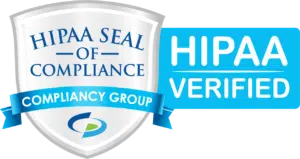Non-medical home care agencies often feel immune from the ongoing changes in Medicare reimbursement. As companies with mostly private-pay business models, they are, in fact, free of CMS mandates. However, wise agency owners should take note of CMS’s rollout of the “Patient-Driven Groupings Model” (PDGM) beginning in 2020—not because they’re directly affected, but because it may indirectly impact marketing strategy.
Here’s the short version of how PDGM may shape private-duty home care in the months and years to come.
Caregiving to Supplement Physical/Occupational Therapy
Many non-medical home care owners are probably unaware of specific PDGM changes effective January 1st 2020. There are several components to the initiative, but one of particular interest to skilled home health agencies is the elimination of Medicare reimbursement for therapy visits. This provides a new value-add marketing opportunity for non-medical home care agencies.
Savvy marketers have long positioned caregiving as a way to help ensure patient compliance with therapy directives. In short, patients discharged from skilled nursing facilities often received orders for home-based therapy, but the therapists only visited two or three times per week. The caregiver was tasked with helping to guide the patient in therapy exercises during therapist “off” days.
With the rollout of PDGM, however, the value of home care as a supplement to home health therapy services increases exponentially. Home health agencies are still expected to provide therapy visits, but common sense suggests they will be more conservative in the scheduling given the lack of reimbursement. Also, PDGM is allowing for the use of supplemental “virtual visits,” so some therapy sessions may be remote.
While nobody knows exactly how PDGM will affect therapy moving forward, it’s safe to assume that non-medical caregivers can—and will—serve a bigger function. If there are fewer therapist visits, then home care aides will be even more utilized for ensuring compliance on the “off” days. If home health agencies begin relying more heavily on virtual visits, then non-medical caregivers will also be utilized to assist the senior in use of video conferencing platforms and other technology.
Assistance with Virtual Care Solutions and RPM
As briefly addressed in the prior section on likely changes in home health therapy protocols, virtual care and remote patient monitoring (RPM) technology will gain a bigger role under PDGM. Beyond PDGM’s affect on therapy, new CMS policies generally encourage use of the technologies. Home health agencies have already shown a willingness to adopt the virtual solutions in 2019, and the trend will likely continue into 2020 and beyond.
Once again, enter non-medical home care. Studies show that virtual care and RPM technology can dramatically improve patient outcomes and reduce preventable hospital readmissions. However, its utility can only be realized if the platforms are used. Low utilization of health-tech among seniors is one of the biggest challenges for healthcare providers.
Smart home care marketers should develop strategies to highlight value-add specifically relating to virtual care and RPM utilization. Partnerships can be formed in which caregivers work with area hospitals and care providers to learn their specific technology platforms. Then, those aides are well-equipped to serve the corresponding patient populations by encouraging utilization of the home-based technologies.
Really, this is just the natural evolution of “medication reminder” services. Medication reminders are also a compliance-focused value-add that have long resonated with hospital and facility referral sources. Savvy home care marketers who make the connection and sell it accordingly will be speaking the language of case managers, discharge planners and social workers!
Home Care’s Role in “Outcomes-Focused” Care Delivery
Forward-thinking non-medical home care agencies have been marketing with a “hospital readmission prevention” angle for several years now. However, the PDGM rollout will further justify the role of caregivers in achieving outcomes-focused goals. CMS first directed its attention on hospitals but is now transitioning toward home-based care.
Simply put, home health agencies are finding that they will need to find ways to stay profitable as CMS moves them away from “fee-for-service” to “value-based care.” Their leaders will have more incentive to refer to non-medical home care compatriots and partnership opportunities may arise. Home care marketers may be wise to start brain-storming contract proposals and preferred rates for direct payers.
It’s true that some skilled home health agencies have their own CNAs and private duty divisions. But others will find that large non-medical home care partners may have better resources and benefits of scale. Win-win partnerships are very likely to form in the months and years to come!
Summary
At the end of the day, there’s no doubt that private-duty home care agencies are in their own world when compared to their skilled home health counterparts. They generally need not worry about CMS changes and Medicare reimbursement. However, the healthcare ecosystem is very complex, and all providers are connected one way or another. Home care marketers who think creatively will find ways to add value to their Medicare-reimbursed friends.
If you’re an agency seeking real-world home care and home health marketing solutions for increased growth, be sure to connect with the industry’s most-trusted resource today!











